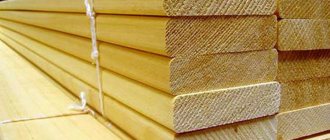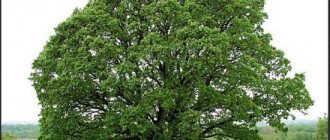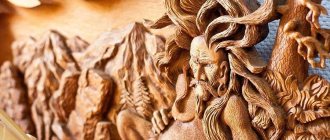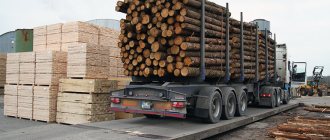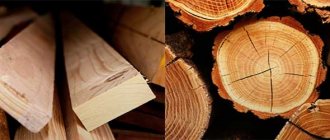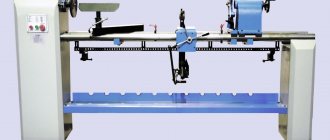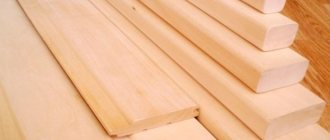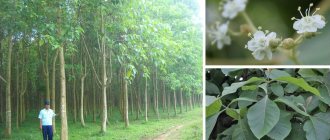- Reports and messages
- Miscellaneous
- Wood
Wood is a fairly elastic material consisting of long fibers.
The word wood speaks for itself of what this material consists of. Most often this includes the trunk, branches, and roots of trees, which are further processed and the wood comes off the conveyor. This amazing material has found its application in all corners of the globe. It is used in both agriculture and the chemical industry. In addition to wood, trees also provide the oxygen that we all breathe. Unfortunately, humanity is not aware of all its actions and continues global deforestation. On the one hand, this is logical, since oil and gas are already running out, and wood is a renewable source of energy. On the other hand, we need to think about what we will do when the trees run out and new ones have not yet grown.
When a tree grows, there are three main parts: crown, trunk and root. All these parts are unique in their own way and perform a clear range of functions. In addition, each part of the tree is used differently.
The crown is the leaf cover of a tree. It is in this part that the process of photosynthesis occurs with the release of oxygen. But this part is almost not valued in production. Only food additives for livestock are made from it.
The tree trunk makes up the majority of the tree. This is the part that is most appreciated. The wood itself is extracted from the trunk.
The roots of the tree are underground and hidden from human eyes. At first glance, the roots only support the tree, but this is far from the case. The root system supplies all trees with mineral salts that have been dissolved in water. In addition, the roots can store water for several years. In dry years, a tree can survive if it has a developed root system.
Judging by the primitive structure of wood, it surprisingly has many useful properties. Hygroscopicity is one of the most important properties that allows wood to extract moisture from the environment. This property also has the opposite effect, that is, it can transfer moisture to drier objects. There is another property associated with moisture, which is called wood shrinkage. This means that when water is extracted from a tree, it decreases in volume, and this property also has the opposite effect. These were just two of the main properties of wood, but there are many more. Each specific property is used in its own way and in different types of industry. You need to know that wood has many more properties than any metal.
Only materials for construction are made from wood. Basically these are boards and beams. Various finishing materials are also produced...
Report No. 2
Types of wood and its use.
For more than a dozen centuries, humanity has learned to use or obtain many different materials and polymers for its needs. Fortresses were built from stones, quartz was heated to a glass state, clay could be used to create dishes by firing. Currently, one of the most abundant resources on Earth is wood. What is she? What types are there? And where does it find its purpose?
A brief concept about wood. Its properties.
This material has several definitions. Let's take the easiest one to understand. At least, this is the concept used in everyday life. Wood is the tree underneath the bark, inside. This section of wood is formed from a conductive bundle. It is also worth considering the inherent properties of wood. But there are quite a lot of them, and therefore we will take only the main ones. The most obvious property is that wood is a solid substance. And a fairly durable substance that can withstand decent loads. However, wood can be subject to deformation if force is applied. Any tree burns. But trees also know how to absorb moisture. There is resistance to gradual destruction of the surface due to friction. I won't talk about the smell and taste.
How is wood used? And how many types of it are there?
In total, 16 types of wood are produced on the planet. For example, from spruce, pine or oak. Each species differs from each other in color shade and stripes. If we talk about the application, it is very extensive. The first thing that comes to any person’s mind is to use a tree for firewood. Yes, the most common use is as fuel. It is worth noting that wood is the world's first fuel. What about the other functions of wood?
- What everyday material is obtained from wood? Of course, paper. It turns out that all notebooks, textbooks, album sheets, books are all wood.
- Wood is widely used in the furniture industry. The same tables and chairs, cabinets, even the laminated flooring - all made of wood.
- The last thing I want to talk about is construction. Doors to an apartment can be made of wood, and window frames too. What can we talk about if you can still find houses made entirely of boards and logs!
5, 6, 7 grades, basic properties, structure, products. By technology
Technology lesson “Wood. Wood species", 5th grade
#5th grade #Technology #Methodological developments #Lesson #Subject teacher #School education
presentation Wood. Lumber and wood materials. Lesson "Technology 5th grade" Teacher Baida Sergey Gennadievich
The purpose of the lesson is to study with students the types of wood, its structure and its areas of application. Study with students the profiles of various lumber, manufacturing methods and areas of application.
Lesson plan: 1. Introduction to concepts 2. Practical work 3. Conclusions 4. Reflection
Introduction to concepts Wood is a natural structural material. A tree species is a type of perennial woody plant (deciduous and coniferous forests). Texture-pattern on a longitudinal section of wood. The breeds are distinguished by color, texture, smell and hardness.
Wood of various tree species
Tall and dwarf trees
Wood harvesting
Business and firewood
A sawmill frame is a machine for longitudinally sawing logs using band saws.
The peeling machine is used to produce thin transverse chips.
Use of veneer
Making plywood
Multilayer and laminated plywood
TIMBER HAS THE FOLLOWING ELEMENTS TIMBER HAS THE FOLLOWING ELEMENTS
1. Look at samples of different types of wood. 2. Mark each sample with chalk. 3. Compare the texture of each wood sample with the texture of the different types of wood shown in Figure 24 in the textbook. 4. Explain the similarities and differences between the samples (placement, width of annual rings, color of wood, smell, other characteristics). 5. Based on the above properties and the pattern of the corresponding texture shown in the textbook, determine the type of wood. 6. Fill out the table according to the following sample: Sample No. Wood group. Wood species LABORATORY-PRACTICAL WORK
Test tasks Coniferous species include 1. birch 2. oak 3. pine 4. spruce Lumber includes 1. whip 2. board 3. timber 4. all of the above Deciduous species include 1. maple 2. aspen 3. spruce 4. pine What is a natural pattern called? 1. structure 2. texture 3. fittings 4. core
Conclusions: Wood is truly an excellent structural material which we cannot do without in everyday life, furniture and kitchen utensils, used in arts and crafts, carriage building, shipbuilding, etc. 2. The only drawback is that it is afraid of moisture, under its influence plywood delaminates, the slabs swell, and the lumber warps. 3.But all these shortcomings are more than offset when you sit at a beautiful mahogany table, in an environmentally friendly house built with your own hands and eat cabbage soup with a wooden spoon.
Popular message topics
- City of Kurgan
Kurgan is a city founded in 1553, located on the Tobol River and bordering Kazakhstan. Until the 17th century, it was a military settlement. But in the 18th century, due to shifting state borders, it no longer made sense to station troops here. - Minerals
The formation of human life on Earth has come a long way. People acquired a lot of knowledge and skills. Now they are used to living well and not needing anything. To improve their lives, people need to attract costs and a variety of - Software Software
is a set of programs that help perform certain functions and tasks on a personal computer. A program is a certain sequence of actions written in a specialized machine language.
CONIFEROUS WOOD
On the territory of the Russian Federation, 85% of the total forest reserve is occupied by coniferous species. The most common: spruce, pine, larch, fir, cedar.
How to distinguish pine wood
- straight-layered, fairly strong, moderately light, resinous. The color is light with a reddish tint, darkens in the open air and turns into gray. Easy to process and easy to dry. Pine lumber is used in many industries: construction, furniture production. Angara pine is especially valued.
How to distinguish spruce wood
is an analogue of pine, although its quality is lower (lower strength of products and the presence of knots).
Kingwood and cherry
How to distinguish larch wood
used less frequently than spruce and pine. Straight-layer, heavier than pine, has a higher resistance to impact loads. There are 14 species of larch growing on the territory of Russia, of which the Daurian and Siberian larch are the most valuable. It is more difficult to process than pine, it is resinous, and is highly resistant to rotting.
How to distinguish fir wood
It is almost white in color, soft, non-resinous, and has lower mechanical properties compared to spruce wood.
How to distinguish cedar wood
It has a pinkish-white color, is characterized by resistance to decay, is close in strength to spruce and fir, and cuts well. Cedar wood is used in carpentry and furniture production, in the manufacture of pencils, etc. Yew wood has a beautiful appearance, therefore it is especially valued in furniture production, used in interior decoration, in the manufacture of turning and carved products.
How to distinguish juniper wood
has limited use due to the small size of the barrel; it is used for the manufacture of small turning and carved products.
Wood species. Type SS
Types of lumber
Division into grades is carried out by assessing the condition of the worst side of the face, edge, and section.
Selected lumber should not have rot, mold, cancerous and fungal stains, growths and other foreign inclusions on the surface, as well as cracks from shrinkage. The permissibility of fused healthy knots is two per one meter in length, shallow edge and face cracks are 16%, deep ones are no more than 10%. The scope of application of the products is mainly shipbuilding and automotive construction.
The area of application of first grade lumber is the wood manufacturing industry. This type of material should not have dry wobbly knots, healthy knots larger than 1 cm, through and cracks larger than 1 cm, wounds on the wood overgrown with bark, young active layers of wood, mold, mechanical damage, various foreign inclusions, and rottenness.
Second-grade products are most often used in the manufacture of furniture. Such lumber is characterized by the absence of through and cracks, the total length of which is more than a third of the length of the product, three wormholes per meter of length of the material, rottenness, traces with parasites, mechanical damage and various inclusions. Third grade lumber may have certain defects; they are used in the production of containers.
The scope of application of materials of the fourth grade is the construction of cabins, utility buildings, gazebos, the production of boxes, loess, pallets and construction formwork.
